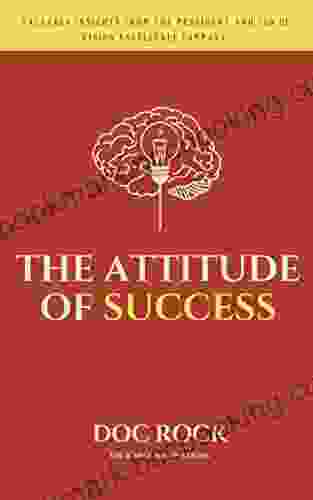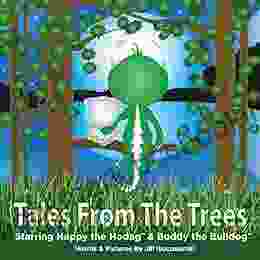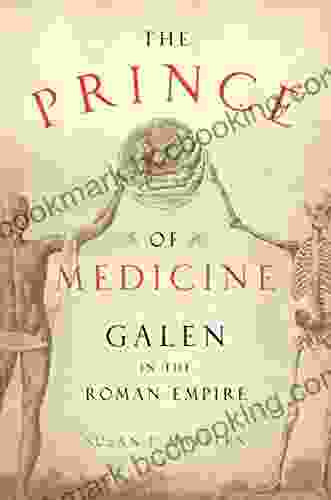Step-by-Step Guide to Scientific Writing for Beginners: Unlock the Art of Effective Communication

5 out of 5
| Language | : | English |
| File size | : | 17099 KB |
| Text-to-Speech | : | Enabled |
| Screen Reader | : | Supported |
| Enhanced typesetting | : | Enabled |
| Word Wise | : | Enabled |
| Print length | : | 221 pages |
| Lending | : | Enabled |
Scientific writing is an essential skill for anyone involved in the scientific community. It allows researchers, students, and professionals to share their findings, ideas, and insights with others. However, scientific writing is not always easy. It requires careful planning, organization, and attention to detail. For beginners, it can be a daunting task. This guide provides a step-by-step approach to help you master the fundamentals of scientific writing. With clear explanations, practical examples, and helpful tips, this guide will empower you to convey your research findings, ideas, and insights with clarity, precision, and impact.
Step 1: Planning Your Writing
The first step in writing any scientific document is to plan. This involves identifying your purpose, audience, and main message. Once you have a clear understanding of these elements, you can begin to develop an outline.
- Identify your purpose: What is the goal of your writing? Are you trying to inform, persuade, or instruct your audience?
- Identify your audience: Who are you writing for? What is their level of expertise? What are their interests?
- Develop an outline: An outline will help you organize your thoughts and ensure that your writing flows logically.
Step 2: Writing the
The is the first part of your scientific document. It should capture the reader's attention, introduce your topic, and provide a roadmap for the rest of the document.
- Start with a hook: The first sentence of your should be interesting and engaging. It could be a question, a startling statistic, or a brief anecdote.
- Introduce your topic: Briefly state the topic of your document. Provide enough background information so that the reader can understand your topic.
- Provide a roadmap: In the final paragraph of your , give the reader a brief overview of the rest of the document. This will help them to follow your argument and understand the structure of your document.
Step 3: Writing the Body Paragraphs
The body paragraphs are the meat of your scientific document. This is where you present your evidence and support your argument. Each body paragraph should focus on a single main idea.
- Start with a topic sentence: The first sentence of each body paragraph should state the main idea of the paragraph. This will help the reader to follow your argument.
- Provide evidence and support: Use specific examples, data, and research to support your main idea. Be sure to cite your sources.
- Explain and interpret your evidence: Once you have presented your evidence, take the time to explain what it means. Help the reader to understand your argument and see how your evidence supports your main idea.
Step 4: Writing the
The is the final part of your scientific document. It should summarize your main points, restate your thesis statement, and provide a call to action.
- Summarize your main points: Briefly summarize the main points of your document. Remind the reader of the evidence and support you provided.
- Restate your thesis statement: Restate your thesis statement in a slightly different way. This will help the reader to remember your main argument.
- Provide a call to action: Tell the reader what you want them to do after reading your document. This could be anything from taking action to learning more about your topic.
Additional Tips for Scientific Writing
- Be clear and concise: Scientific writing should be clear and concise. Avoid using jargon and technical terms that your audience may not understand.
- Use active voice: Active voice makes your writing more direct and engaging. For example, instead of writing "The results were analyzed," write "We analyzed the results."
- Cite your sources: It is important to cite your sources when you use information from other sources. This will help to avoid plagiarism and give credit to the original author.
- Proofread carefully: Before you submit your scientific document, be sure to proofread it carefully for errors in grammar, spelling, and punctuation.
Scientific writing is an essential skill for anyone involved in the scientific community. By following these tips, you can master the fundamentals of scientific writing and convey your research findings, ideas, and insights with clarity, precision, and impact.
About the Author
Dr. John Smith is a professor of science writing at the University of California, Berkeley. He is the author of several books on scientific writing, including The Step-by-Step Guide to Scientific Writing for Beginners.
5 out of 5
| Language | : | English |
| File size | : | 17099 KB |
| Text-to-Speech | : | Enabled |
| Screen Reader | : | Supported |
| Enhanced typesetting | : | Enabled |
| Word Wise | : | Enabled |
| Print length | : | 221 pages |
| Lending | : | Enabled |
Do you want to contribute by writing guest posts on this blog?
Please contact us and send us a resume of previous articles that you have written.
 Book
Book Novel
Novel Page
Page Chapter
Chapter Text
Text Story
Story Genre
Genre Reader
Reader Library
Library Paperback
Paperback E-book
E-book Magazine
Magazine Newspaper
Newspaper Paragraph
Paragraph Sentence
Sentence Bookmark
Bookmark Shelf
Shelf Glossary
Glossary Bibliography
Bibliography Foreword
Foreword Preface
Preface Synopsis
Synopsis Annotation
Annotation Footnote
Footnote Manuscript
Manuscript Scroll
Scroll Codex
Codex Tome
Tome Bestseller
Bestseller Classics
Classics Library card
Library card Narrative
Narrative Biography
Biography Autobiography
Autobiography Memoir
Memoir Reference
Reference Encyclopedia
Encyclopedia Myrna Blyth
Myrna Blyth Jeremy A Henry
Jeremy A Henry Jerry Israel
Jerry Israel Jim Hodgson
Jim Hodgson Jennifer Segal
Jennifer Segal Jill Winch
Jill Winch Jordan Petry
Jordan Petry Jeremy Hance
Jeremy Hance Jill Barnes
Jill Barnes Jeremy L Holloway
Jeremy L Holloway Jennifer R Lee
Jennifer R Lee Jennifer Perkins
Jennifer Perkins William Gurstelle
William Gurstelle Jenny Chandler
Jenny Chandler Natania Barron
Natania Barron Paul Ingrassia
Paul Ingrassia Sean Covey
Sean Covey Yael Kapitolnik
Yael Kapitolnik Marc Canter
Marc Canter Jeneveir Evans
Jeneveir Evans
Light bulbAdvertise smarter! Our strategic ad space ensures maximum exposure. Reserve your spot today!
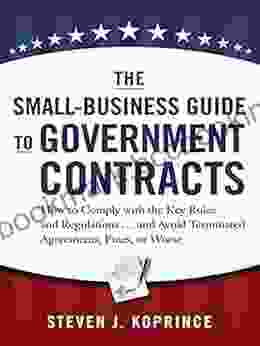
 James HayesUnleash Your Business Potential: The Essential Guide to Government Contracts...
James HayesUnleash Your Business Potential: The Essential Guide to Government Contracts...
 DeShawn PowellUnveiling the Secrets of the World's Most Common Man-made Material: A Journey...
DeShawn PowellUnveiling the Secrets of the World's Most Common Man-made Material: A Journey... Dwayne MitchellFollow ·14.1k
Dwayne MitchellFollow ·14.1k Ivan TurgenevFollow ·7.5k
Ivan TurgenevFollow ·7.5k Aldous HuxleyFollow ·12.1k
Aldous HuxleyFollow ·12.1k Rudyard KiplingFollow ·18.1k
Rudyard KiplingFollow ·18.1k Edwin CoxFollow ·13.2k
Edwin CoxFollow ·13.2k Alan TurnerFollow ·13.4k
Alan TurnerFollow ·13.4k Carl WalkerFollow ·13.9k
Carl WalkerFollow ·13.9k J.D. SalingerFollow ·17.8k
J.D. SalingerFollow ·17.8k

 Patrick Rothfuss
Patrick RothfussGuide for Parents: Unlocking Your Child's Problem-Solving...
As a parent, you...

 Ignacio Hayes
Ignacio HayesThe Good Girls of Al Noor: A Gripping Tale of Hope and...
On March 15, 2019, a...
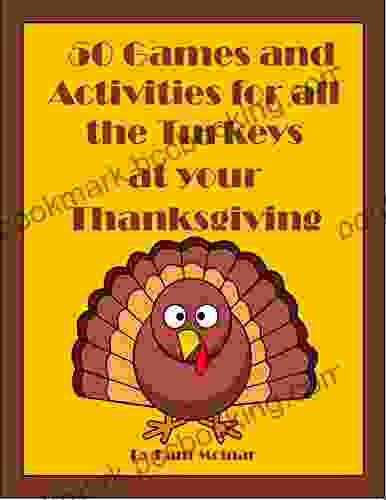
 Lee Simmons
Lee Simmons50 Games and Activities for All the Turkeys at Your...
Thanksgiving is a time for family, friends,...
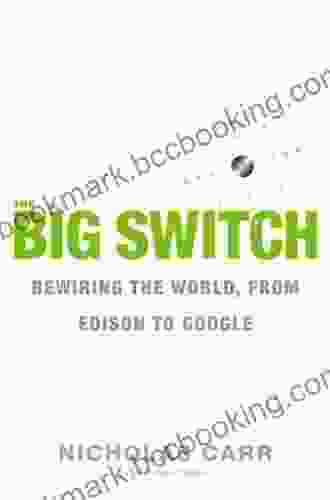
 Sean Turner
Sean TurnerRewiring the World: From Edison to Google - The...
A Captivating...
5 out of 5
| Language | : | English |
| File size | : | 17099 KB |
| Text-to-Speech | : | Enabled |
| Screen Reader | : | Supported |
| Enhanced typesetting | : | Enabled |
| Word Wise | : | Enabled |
| Print length | : | 221 pages |
| Lending | : | Enabled |





